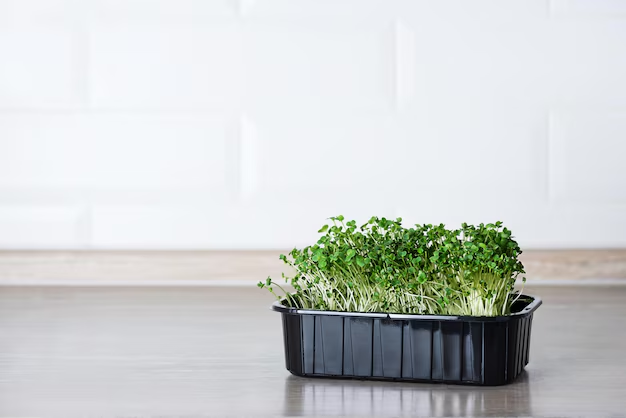How to Keep Sprouts Fresh in Your Refrigerator for Longer
Sprouts are a vibrant addition to any diet, celebrated for their crunch, nutrition, and versatility. However, like many fresh foods, they can quickly lose their luster and freshness without the right storage techniques. Understanding how to properly store sprouts in your refrigerator not only maintains their quality but also maximizes their shelf life, minimizing waste. Let's explore some practical and effective methods to keep your sprouts crisp and delicious.
🌱 Why Proper Sprout Storage Matters
Sprouts are nutrient-dense foods that offer numerous health benefits, including being rich in vitamins, minerals, and antioxidants. However, these benefits are best enjoyed when sprouts are fresh. Storing them correctly is crucial for preserving their nutritional value and preventing spoilage.
Nutritional Value and Benefits of Sprouts
- Rich in Essential Nutrients: Sprouts are a good source of vitamins C and K, as well as minerals like iron and magnesium.
- High in Antioxidants: These compounds help combat oxidative stress in the body, supporting overall health.
- Digestive Health: Sprouts contain enzymes that aid in digestion, making them a great addition to any diet.
Understanding these benefits underscores the importance of keeping sprouts fresh.
🥒 The Basics of Sprout Storage
To maintain their nutritional integrity and taste, storing sprouts properly is essential. Here are the basic guidelines:
Ideal Refrigerator Conditions
- Temperature: Store sprouts at a refrigerator temperature of 32-41°F (0-5°C) to slow down spoilage.
- Humidity: High humidity can lead to increased spoilage; hence, aim for moderate humidity levels.
Packaging Options
- Ventilated Containers: Use containers that allow for minimal air exchange, preventing overly moist conditions.
- Sealed Bags or Jars: For certain sprouts, airtight glass jars or zip-lock bags can help retain freshness by preventing drying.
📦 Step-by-Step Guide to Storing Sprouts
Here's a detailed guide to ensure your sprouts remain fresh and crunchy for as long as possible:
1. Selection and Preparation
Begin with fresh, high-quality sprouts. Avoid any that appear slimy or smell off.
- Inspection: Choose crisp, vibrant sprouts without wilting or discoloration.
- Prepping: Rinse sprouts under cool, running water before storage to remove any residual dirt or bacteria.
2. Drying
After washing, drying sprouts is crucial to prolong freshness.
- Air Drying: Spread sprouts on a clean, dry kitchen towel and allow them to air dry.
- Paper Towels: Use paper towels to gently pat them dry, ensuring moisture is removed.
3. Storage Containers
Choose the right container based on the type of sprout and your preference.
- Glass Jars: Ideal for sprouts that need to breathe while staying crisp.
- Plastic Containers: Ensure they are clean and dry before use.
- Paper Towels: Line the container with paper towels to absorb excess moisture.
4. Placement
Store sprouts in a part of the refrigerator where temperature and humidity are consistent.
- Location: Keep them in the crisper drawer, specifically designed to maintain optimal freshness for vegetables.
- Avoid Overstuffing: Give your sprouts space for air circulation to prevent mold growth.
5. Regular Checks
Inspect your sprouts frequently to ensure they haven't started spoiling.
- Visual & Smell Test: Look for any signs of spoilage and discard those immediately.
- Usage Timeline: Typically, sprouts should be consumed within a week of storage to enjoy their peak quality.
🌟 Common Sprout Storage Challenges and Solutions
Successfully storing sprouts involves overcoming a few common hurdles. Here's a quick guide to help:
| Challenge | Solution |
|---|---|
| Excess Moisture | Use paper towels in containers to absorb moisture. Ensure sprouts are fully dry before storage. |
| Overcrowding | Use multiple containers to avoid cramming. Allow room for air circulation. |
| Temperature Fluctuations | Store sprouts at the back of the fridge to minimize exposure to temperature changes. |
🍽️ Creative Ways to Enjoy Fresh Sprouts
Storing sprouts successfully opens up a world of culinary possibilities. Here are a few delicious ideas to use them:
- Salads: Add a handful of fresh sprouts to any salad for a crunchy texture and nutritional boost.
- Sandwiches and Wraps: Include sprouts for a fresh, tangy bite that complements other ingredients.
- Smoothies: Blend sprouts into smoothies for an unexpected twist of nutrition.
🔍 Summary: Practical Tips for Storing Sprouts
Here's a quick recap to ensure you're getting the most out of your sprouts:
- Choose Fresh Sprouts: Quality matters right from the start.
- Dry Thoroughly: Excess moisture is the enemy of longevity.
- Use the Right Container: Ventilation or airtightness depends on sprout type.
- Store Consistently: Find a stable temperature spot in your fridge.
- Inspect Regularly: Act quickly on any signs of spoilage.
🏷️ Empowering Your Sprout-Storage Skills
Successfully storing sprouts can initially seem like a bit of a challenge, but it’s rewarding once you establish a routine that works for you. With these practices in place, you'll be able to enjoy fresh, nutritious sprouts whenever you choose, minimizing waste and maximizing taste and health benefits.
By understanding the needs of your sprouts and your refrigerator, you are well-equipped to extend their shelf life, keeping them fresh and ready for all your kitchen adventures. Happy sprout-storing! 🌿
